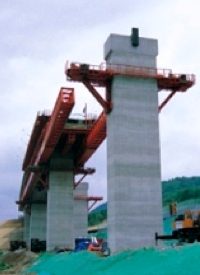
The Associated Press has conducted an economic analysis to determine the effect of the first 10 months of federal stimulus spending to build roads and highways on creating jobs in the construction industry. This analysis was conducted by five different economists at five different universities.
These economists used U.S. Department of Transportation and U.S. Department of Commerce data in their studies. Out of the $21 billion in stimulus funds for transportation construction projects, the impact upon unemployment was negligible.
One of those economists, Thomas Smith at Emory University, supported the stimulus package but he now finds that although the funds may have resulted in some people being employed, the stimulus spending in the construction area has not resulted in creating jobs. Another economist compared the impact of federal stimulus funds to employment in the construction industry to trying to move the Empire State Building by pushing it.
Almost no county in America received more stimulus funds for construction projects than Marshall County, Tennessee, and yet a local contractor was quoted as saying that federal stimulus funds had not helped the working people of the county at all. The contractor’s business was almost completely dried up, despite the heavy infusion of federal stimulus funds.
This analysis of the impact of federal stimulus funds for construction projects shadows the general use of stimulus funding to create jobs. Construction jobs, after all, are “shovel ready,” a term used often by the Obama administration to define exactly the sort of projects expected to help the employment picture. Not only are construction workers hired, often at good pay scales, but construction work is intended to be “multiplier” employment: Construction work also requires cement, lumber, asphalt, and other materials that translate into jobs to make those materials available. The work done by construction teams also is intended to build up the infrastructure of a community.
The reality is quite different. Invented construction projects are not good investments. Construction projects also involve the administration of funds by two different bureaucracies — the federal granting agency and the receiving state or local government bureaucracy that uses the funds for the projects. If money spent on government red tape was economically valuable, then the federal government could simply hire everyone unemployed to work as a low-level bureaucrat.
Construction projects are also, often, by their very nature onetime expenses. If some county builds a road, when the work is done the employment dries up. If a road should have been built for sensible planning reasons, then it should be built whether or not federal funds are available. Enticement to spend tax dollars almost never produces sound investments.
The most fundamental problem, though, is that money spent by tax dollars or money borrowed against the credit of the United States is not spent in a vacuum. These dollars drain up the pool of investment for private enterprise. Businesses take spending much more seriously. For one thing, McDonalds or Walmart does not make investments in new restaurants or stores with an eye to maximizing the number of jobs. Instead these and other successful businesses try to calculate the maximum effective use of what labor is employed.
The creation of jobs is a byproduct of sound business decisions, but because a prudent and fair calculation of the costs and benefits of each position are made before people are hired, those jobs are inherently more secure. Employees who work in those jobs learn skills which are needed economically and it makes good sense for employers to advance those employees who master their work, show diligence and honestly, and who are suitable for promotion.
Government dollars paid to hire workers for certain economically dubious projects, however, means that the very reason for hiring the people — to “create” jobs — ends just as soon as the federal dollars are gone. Employers relying on federal funds do not even have an incentive to try to make these newly hired workers part of the business structure for later promotion: Tax dollars, not supply and demand, was the reason for hiring the workers. As five economists who reviewed all the federal stimulus funding in the construction agree, this approach does not create lasting jobs.



